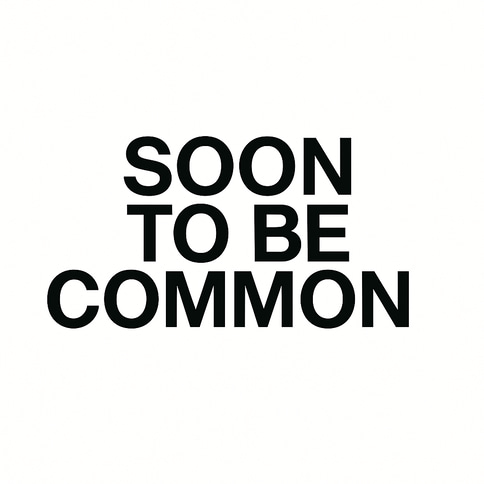Embracing Tomorrow's Absurdities: A Journey Through Dystopian Normalcy
Explore the prophetic archive of soon to be common, where we document the absurdities of corporate culture and tech salvation. Discover how today's contradictions morph into tomorrow's accepted realities. Join us in revealing the gap between marketed utopia and lived dystopia in this unique blog experience.
5/8/20242 min read


Introduction: The Paradox of Progress
We live in an age where the absurd has become mundane. A world where we carry supercomputers in our pockets but forget why we walked into a room. Where we can video chat with someone on the other side of the planet but struggle to talk to our neighbors. Where artificial intelligence writes poetry, deepfakes blur reality, and corporations sell us nostalgia for simpler times—times that, ironically, never really existed.
This is the dystopian normalcy of the 21st century: a landscape so bizarre that satire struggles to keep up. Yet, instead of resisting it, we adapt. We shrug, scroll, and move on. How did we get here? And more importantly—how do we navigate a future that keeps outdoing its own strangeness?
Chapter 1: The Rise of Comfortable Dystopias
Classic dystopias—*1984*, Brave New World, Fahrenheit 451—warned of oppressive regimes, forced conformity, and the death of free thought. But our modern dystopia is different. It’s voluntary.
We trade privacy for convenience, letting algorithms curate our desires.
We doomscroll through crises, numbed by the endless churn of outrage.
We work longer hours for diminishing returns, chasing an illusion of stability.
The twist? We chose this. No jackboots forced us to hand over our data or tie our self-worth to likes. We did it willingly, lured by the promise of connection, efficiency, and entertainment.
Chapter 2: The Absurdity of Everyday Life
The future isn’t just dystopian—it’s ridiculous. Consider:
Corporate Surrealism: Fast-food chains sell "nostalgia meals" while the planet burns. Tech CEOs launch themselves into space while their workers struggle to afford rent.
Hypernormalization: We accept contradictions without question. "Green" oil companies. "Ethical" billionaires. "Self-care" sold to us by the same systems that exhaust us.
The Meme-ification of Reality: Wars, pandemics, and political collapses are processed through irony and internet humor. If tragedy is a joke, maybe it won’t hurt as much.
We laugh because the alternative—confronting how deeply broken things are—is too exhausting.
Chapter 3: How to Live in the Absurd
If dystopia is the new normal, how do we stay sane?
Embrace the Irony: Recognize the absurdity without surrendering to cynicism. Dark humor can be a survival tool.
Disconnect to Reconnect: Step away from algorithmic manipulation. Talk to real humans. Touch grass (literally).
Reject Passive Consumption: Create instead of just consuming. Write, build, protest—do something that isn’t optimized for engagement metrics.
Find Your Own Meaning: In a world that commodifies everything, define your own values outside of capitalism’s grasp.
Conclusion: The Future is Weird—Now What?
Tomorrow’s absurdities will make today’s look tame. AI companions, climate migrations, virtual nations—the line between sci-fi and reality will keep blurring. The challenge isn’t just surviving but retaining our humanity in the process.
Maybe the real dystopia was never about external control. Maybe it’s about how easily we give ourselves away.
So laugh at the madness. Question everything. And, when possible, unplug—before the future forgets what it means to be human.
—5 min read. Now back to your scheduled programming.
Dystopia
Exploring the absurdities of our corporate culture.
Archive
Dispatch
© 2025. All rights reserved.
